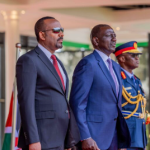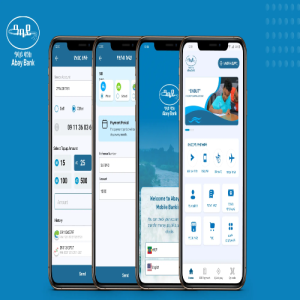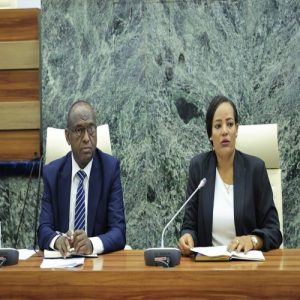In a recent development that has significant implications for the region, Tigray has taken a bold step by officially challenging the status quo of its border with Eritrea. The Tigray interim government, led by President Getachew Reda, endorsed a statement addressing longstanding concerns and claims about the region’s territories. This move has stirred debates about the existing agreements, especially the 2000 Algiers Agreement and the decisions of the International Boundary Commission.
The Eritrean Response
In response to Tigray’s assertions, Eritrea has issued statements through its embassies, categorically denying allegations that its military occupies Tigrayan territories. Recent statements from the Eritrean Embassy to the UK and Ireland emphasized that Eritrean military forces were not deployed beyond Eritrean borders. The Eritrean Information Ministry has challenged those claiming occupation, urging specifics on the locations allegedly under Eritrean control.
Historical Context and Agreements
The historical context of the Ethiopia-Eritrea border issue dates back to the 1998-2000 war between the two nations. The Algiers Agreement signed in 2000 led to the formation of the International Boundary Commission to demarcate the border. However, implementation faced challenges, and the demarcation process remained incomplete, resulting in lingering disputes.
Tigray’s Claims and Pandora’s Box
Ten Tigrayan organizations, including civil society groups led by Erob Anina, have endorsed a statement challenging the current situation. They contend that Eritrea has extended its control over Tigrayan territories beyond the limits of the International Boundary Commission. The statement names specific towns and districts allegedly under Eritrean occupation, fueling a renewed debate about the Algiers Agreement and demarcation decisions.
The Call for Dialogue and International Intervention
The ten Tigrayan organizations propose reassessing the existing agreements in light of the changed ground realities. They advocate for a new deal through dialogue involving the Ethiopian federal government and international mediators. The complexities of the border dispute necessitate a diplomatic solution, potentially by forming a new boundary commission.
Challenges and International Response
Tigray’s official stance on the border issue may challenge finding a swift resolution. The international community faces a dilemma in supporting Tigray’s call for a new agreement, as this could open a Pandora’s Box of prolonged negotiations and uncertainty. The preference may lean toward bilateral talks between Ethiopia and Eritrea, involving reconsidering the existing boundary with agreed-upon modifications.
Conclusion
As Tigray asserts its position on the border dispute, the complexities surrounding the Algiers Agreement and the International Boundary Commission’s decisions come to the forefront. The call for dialogue and a potential reassessment of the existing agreements adds a new layer to an already intricate geopolitical situation. The international community must navigate carefully to find a balanced and lasting solution that addresses the concerns of all parties involved.
Other Stories
Fano Fighters Storm Amhara Regional Radio Facility










More Stories
Kenya & Ethiopia Discuss Removal of Trade Barriers
Another Boat Carrying Illegal Ethiopian Migrants Capsizes
Eritrean Soldiers to Face Trials in Ethiopian Courts